Within the first few weeks of moving to Japan, we experienced our first earthquake. It was getting close to dinner time at our homestay family’s house. It was that really quiet time late afternoon on a hot summer’s day when everyone’s retreated indoors, exhausted from the sun. It was the school holidays and mum and the kids had travelled a few hours away to visit the grandparents so it was just us and dad in charge of keeping the house in order.
The three of us had been in different rooms when the entire two-storey home started to squeak from the foundations. We met in the living room to find the lampshade swinging and all the china in the crockery cabinet rattling and clinking together. It had been a category 3. An intensity that wouldn’t even get us out of bed after a few months in the country.
While locals were completely blasé about the whole thing, it was an event for us. Although not unheard of, earthquakes are not something we generally think about as a risk living in Australia. Experiencing one in Japan for the first time was actually kind of exciting, almost like a rite of passage as a new resident. Dare I say, a novelty.
Over the coming few weeks, earthquakes of this magnitude and higher rocked us at home and at work. It started to become easy to see why many Japanese don’t exhibit any signs of alarm; these were all just rather annoying little disturbances in our day. It was when one of my students uncharacteristically came into class in runners one afternoon that I realized my quick descent into complacency.
Earthquakes may be nothing new in Japan but the high frequency of sizeable quakes in such a short space of time had her on edge. She told me about something I didn’t know before: the Tōkai earthquakes. History would have it that the Kantō region in which many of Japan’s major cities lie, including the capital Tokyo, have experienced a catastrophic earthquake every 100 years or so, give or take a few decades. It had now been more than 150 years since the last one and with the unusually high seismic activity, she wasn’t taking any chances. She was wearing sneakers everywhere she went and was avoiding the subway. She suggested I do the same.
I was teaching one-to-one English lessons to adults at the time and they all made their own decisions about whether they wanted to come to class or if they wanted to leave the building in the event of a tremor. It made me realize that not everyone was as calm and collected as I first thought after that initial shake. This unusual activity had put people on alert and the more it happened, the more the smallest of tremors caused slight panic. My students were all old enough to remember the devastating events of the Kōbe earthquake in 1995 and with the added weight of the overdue Tōkai quake, this was not something to be overlooked.
I too realized the important role I could play, would play, in the event of a major disaster. My actions as a teacher, especially when I went on to teach classes of young children, would be paramount. I was the one they would look to for guidance, to keep them safe and to allay their fears. I went about familiarizing myself with all I could on earthquake safety. I got copious amounts of paper work from the City Hall and even attended a community training session where we were trained as volunteers that authorities could call upon to assist in the event of a disaster affecting the local area.
I’d prepared a bag of emergency supplies at home too and left some bottled water and canned goods at the bottom of the cupboard. I’m no D-day enthusiast by any means, but considering earthquakes are not an “if” but “when” scenario in Japan, it was good practice to have some basic things on hand.
Over the years I would lead many a school evacuation, ensuring each one of my students was safe and accounted for. It still amazes me at how Japanese children are already so accustomed to earthquakes at such a young age. I’ll always remember the time when I was teaching a class of three year olds and the word I was writing on the board suddenly lost form as the marker moved unexpectedly across the board thanks to a tremor. Without instruction, the students all went under the table, as they are generally taught, to shield themselves from any falling objects. We all sat under the table in the dark chatting about what they wanted to be when they grow up until the power came back on.
As history would have it, I wasn’t in the classroom at 2:46pm on March 11, 2011. In fact, I wasn’t at school at all. That day had been designated a practice exam day for the students at the high school I usually worked at on a Friday. It was almost the end of their school year and regular classes had been rescheduled as the students prepared for their final assessments. I was at home reading the lovely letters those very students had given me the day before thanking me for teaching them the past school year and, excited for Spring, uploading a few photos of the plum blossoms I had taken by the river near our apartment we now rented the day before.
It only took a few moments into that initial quake to realize that this was no ordinary tremor. It wasn’t just its intensity which grew alarmingly fast, but the motion was something I had never experienced and, as it would turn out, no Japanese person I know had either. It wasn’t a shake or a shudder like we had been used to, but rather like a rolling motion, a wave. This is it. Tōkai. By this time I was already well out of my chair and making my way down the hall trying to reach my shoes at the front door. Only this had proved more difficult than I thought as I tried to ride each wave out without being knocked off my feet. I remember calling out ‘no’ as I stumbled my way past the kitchen and wishing with every part of me for it to stop. When it finally did, there was an eery silence. I stood frozen in place for several long seconds, fully expecting the surf to begin again. It didn’t. Not then, anyway. There were aftershocks of course, really sizeable ones over the next week and residual ones for months. I went to surfing the web instead which surprisingly hadn’t been at all affected. Within seconds I had information on its magnitude. An 8.9 off the east coast of Tohoku. Later this would be revised upwards to 9.0.
I could write a lot about that day and the weeks that followed. I could talk about the long hours of phone down time, of finding out that Hai was OK via a single Facebook status update he managed to post, the ten hours it took him to walk home from work in business shoes after the public transport network came to a standstill, the scheduled black outs, not being able to get to work for weeks because our train line and bus service hadn’t resumed, the anxiety over Fukushima and what that meant for the environment around us and our water supply, and going to sleep with runners by our side for nights on end, of a Japanese government telling us all was fine and our own telling us to get out.
Yet this all feels rather insignificant considering the devastating loss of life and community that was happening to our north. All we had suffered really was worry and inconvenience. I would feel a sense of disrespect to those in Tohoku to claim our experience was even remotely comparable.
At the same time, the events of 3.11 changed us in many ways. We started volunteering in the affected region, being allowed the honour and privilege of working alongside locals in the clean-up and recovery. I may not have been able to be that person to help my students on 3.11 but I could be that person who would be there going forward, to help those affected with the tasks that needed to be done, to take just a little bit of the burden away, to worry about the small things so they didn’t have to.
Many of you who read our blog probably don’t know that I started it initially as a means of getting the word out about the real situation in Tohoku – forget the domestic news telling us there was nothing at all to worry about and the international media making inflammatory comments without any premise and then promptly dropping the story whenever a better one came along. What about the voices of the people? What was really happening on the ground? What was the volunteering situation like? How can we help? This was all I wrote about at first and despite them receiving virtually no attention, they are some of the most precious posts on our site to me. They will be there always as testament to the truth, what a disaster of this magnitude is like and its aftermath.
The next two years that we lived in Japan following the disasters, we dedicated as much time as possible to volunteering activities. For the times we couldn’t get up to Tohoku because of work commitments, we started leading monthly photo walks in Tokyo as fundraisers and from time to time organizing larger special events. We met some of the most amazing people, those we are now honoured to call our friends, who were happy to support us and these activities. We continued to blog about these events here and invited everyone to be a part of it by voting for their favourite picture in the photo contests we would have after each photo walk.
Some people ask us why we still talk about 3.11 three years on. The answer to that is quite simple. Because there is still so much more to be done. It’s not about dwelling on the past. It’s that the situation isn’t “over” and there are still many ways to help. If there are ways to keep making a difference, why stop?
It was at about this time last year that I was sitting in a restaurant eating oysters from the first harvest from Kobuchihama since the tsunami. You may remember that it was the fishermen from this bay that we assisted with cultivating those very oysters the first summer after it all happened, as re-starting the devastated fishing industry was a priority. One positive thing that came of the tsunami was that nutrients from the ocean floor had been mixed around in the water and accelerated the growth of the oysters making them available for consumption six months earlier than expected. A small group of us volunteers who had become close to the fishermen there, went to a restaurant that was using oysters from the bay in their dishes. After the meal, we called one of the fishermen. In a mixture of surprise and happiness, I will always remember these words: “You really haven’t forgotten, have you?”
So that is why I will go on keeping on. I don’t think we should ever underestimate what it means to someone to remind them that they are not alone. I can never know what it was like to face that wall of water and lose everyone and everything dear to me in a matter of seconds, and I am bloody lucky not to. I don’t pretend to understand what that must have been like. Sometimes it’s just easier to talk to someone who is removed from your situation. I can be that person. To just be there and to keep promoting a conversation.
It’s a principle that we, as Australians, proffer up as one of the most valuable intangibles of our culture, this concept of “mateship” – helping out your fellow Australians when times get tough. It’s not an idea, however, that knows nationality or borders, and it’s not one that limits itself to emergency situations, although it certainly binds us in ones that are.
Unfortunately, this wasn’t Tōkai; that is still to come. And while we can’t know about or contribute to every situation around the world, collectively we can. We can be those people that take it as their responsibility to ensure the world doesn’t forget what’s happening around us, that we keep learning and to echo sentiments of solidarity.
So every year on this day at 2:46pm, we pause to remember this series of events that had such a profound effect on us. Then we spend a minute every other day trying to take this spirit of mateship with us around the globe to every country we visit.
Wherever you are, whatever you do, make your mate minute count. Because we sure as hell can change the world.
~
Below are some photos volunteering in Tohoku in April last year, just a few weeks before leaving Japan. This time we were assisting fishermen in Kobuchihama to harvest mekabu, the base of the seaweed known as wakame.
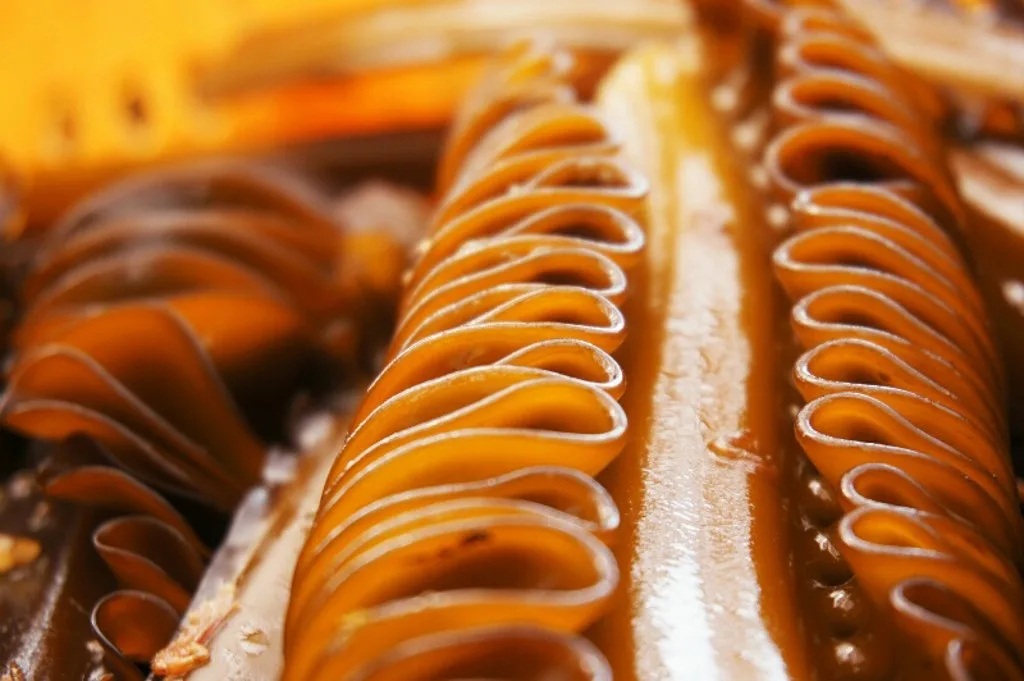
Our job was to remove the “curly” edible bits from the main stem by way of a scraping tool specially designed for the task. Once we got the hang of it, it became really fun to try to slice each side off with one smooth stroke.
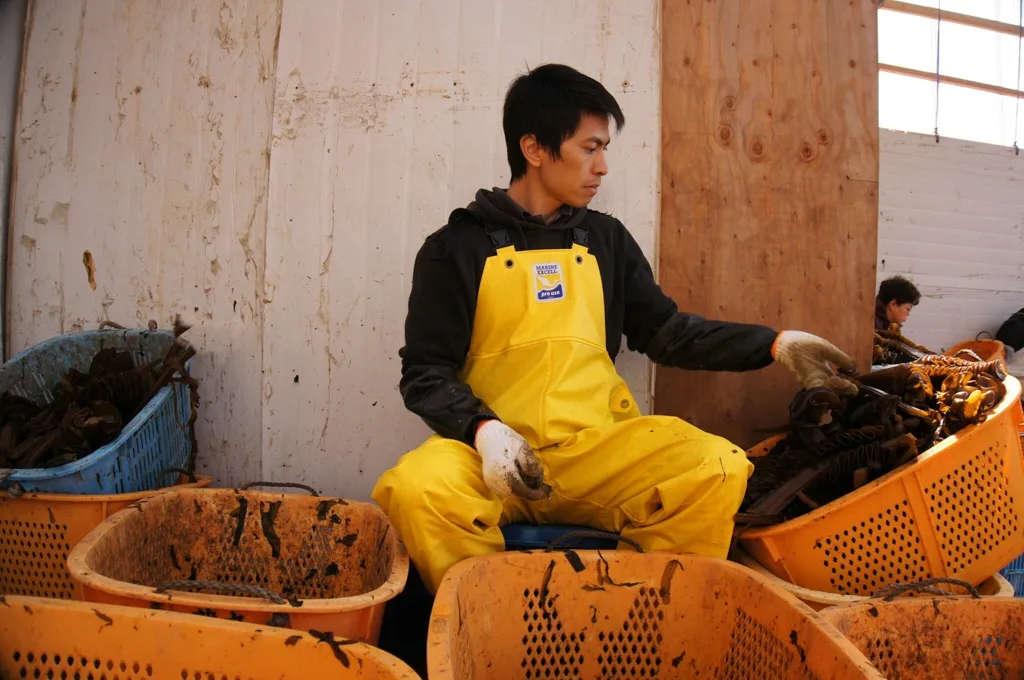
We all had three baskets at all times. One for the unprocessed mekabu, one for the good stuff we were separating off, and the final one for the unneeded stems which were to go back into the ocean.
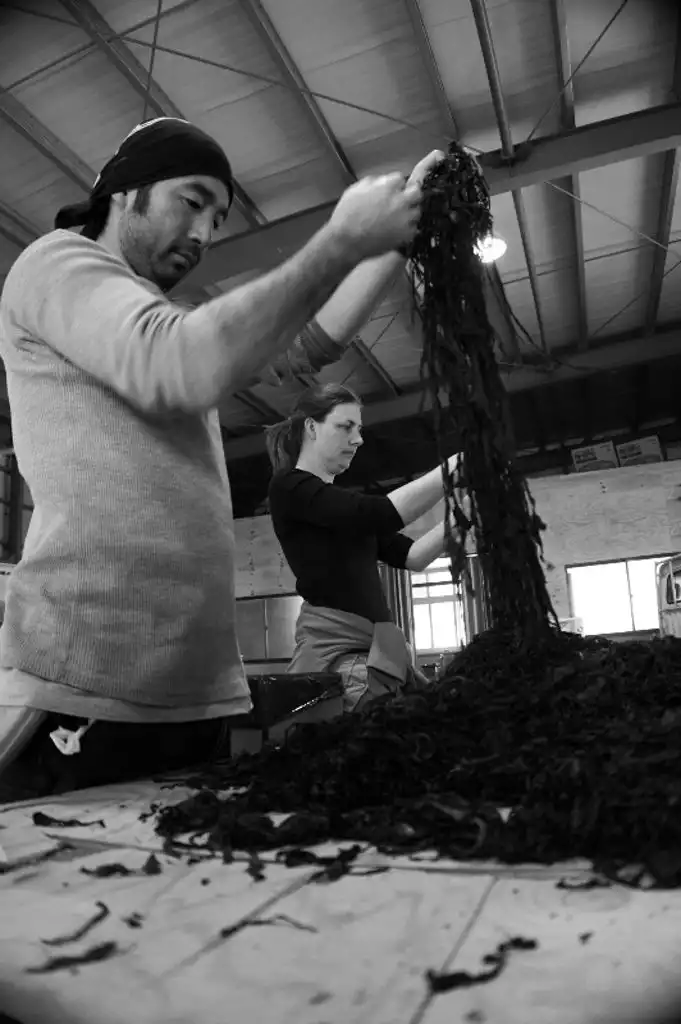
When that was done, we also sorted wakame, the grass-looking part that comes from the top of the same plant.
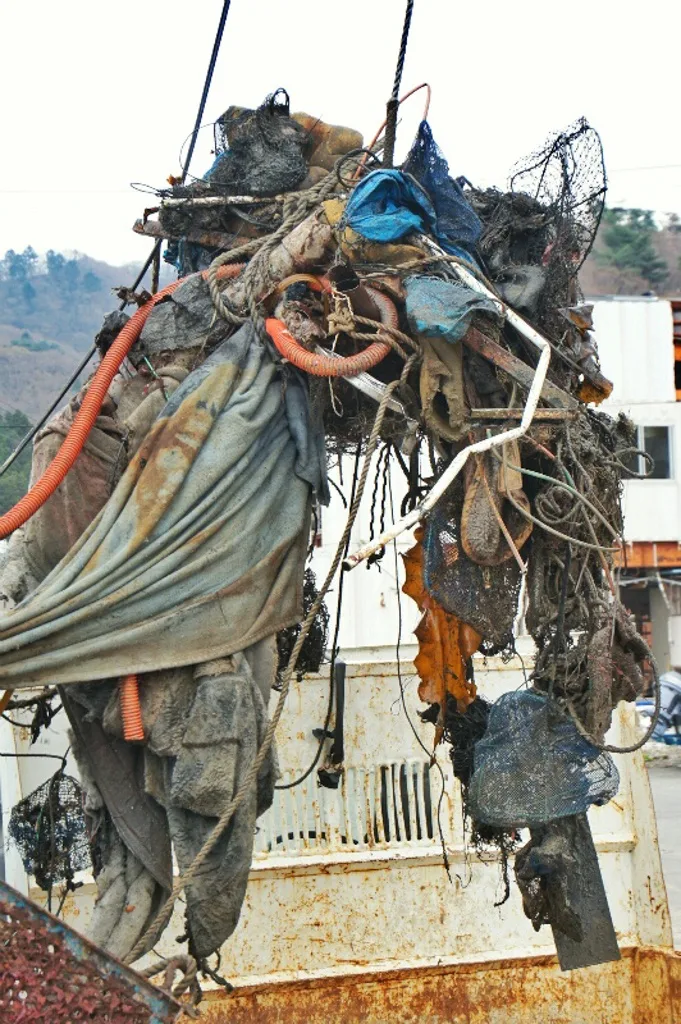
We also spent a day out at Funakoshi, another devastated fishing community, where more dredging of the bay to remove tsunami debris was taking place.
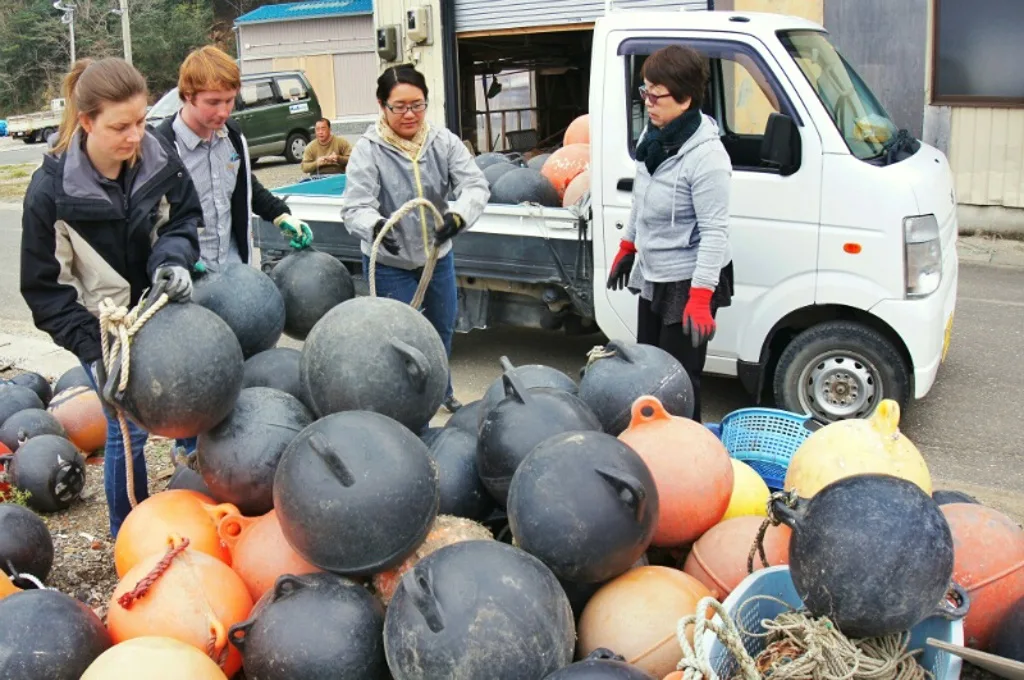
While the fishermen were out dredging the bay, we worked on sorting out buoys and repainting them with the kanji character 中 (naka) referring to Nakazato, the leader of this fishing community.
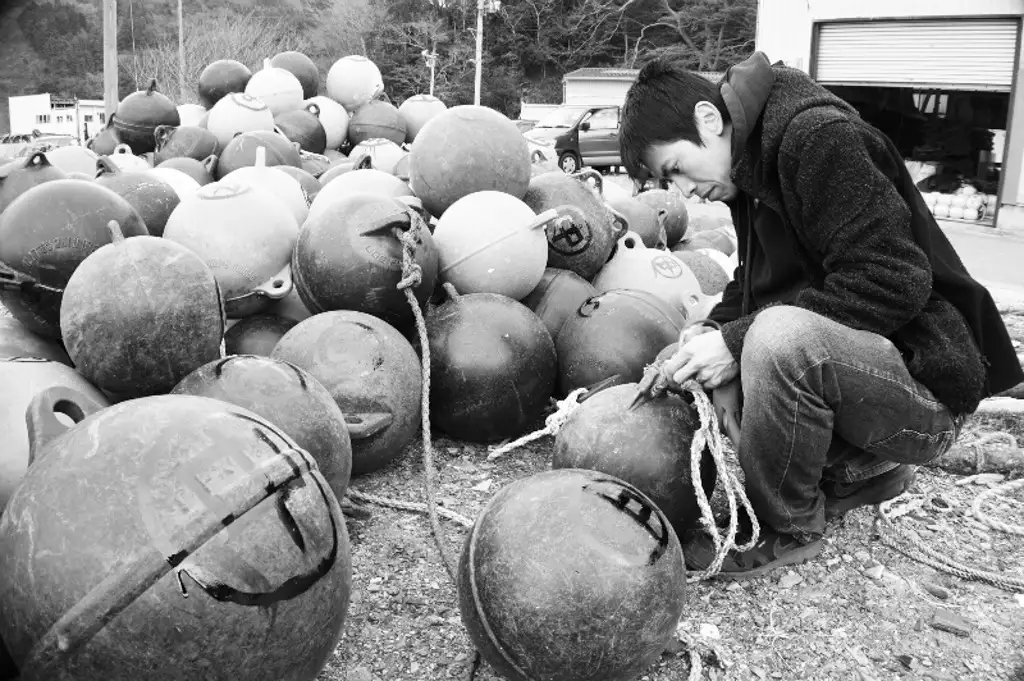
These buoys had been rescued amongst tsunami debris, so it was now necessary to cut off the old and damaged ropes.
If you’d like to read more about our volunteering accounts in the affected area, please click here.
To donate, please visit the website of Playground of Hope, a “social fabric” project building playgrounds for disaster-affected communities to give children a safe place to play again, and as a means of bringing displaced communities together.
For a great read and special recipe book that also supports Tohoku, grab a copy of Hashimoto’s Tohoku Recipes from Amazon Japan. More than a cookbook, this is an inspirational story of a woman and her husband who used their life savings to cook thousands of hot meals for volunteers following the disaster. Read more about this amazing woman and publication here. If you would like to purchase the book internationally and want to avoid the high shipping fees, you can contact Tohoku-based NPO It’s Not Just Mud to have them ship a copy out to you at a reduced rate. Please note that prices will change from April due to an increase in Japanese postal charges.

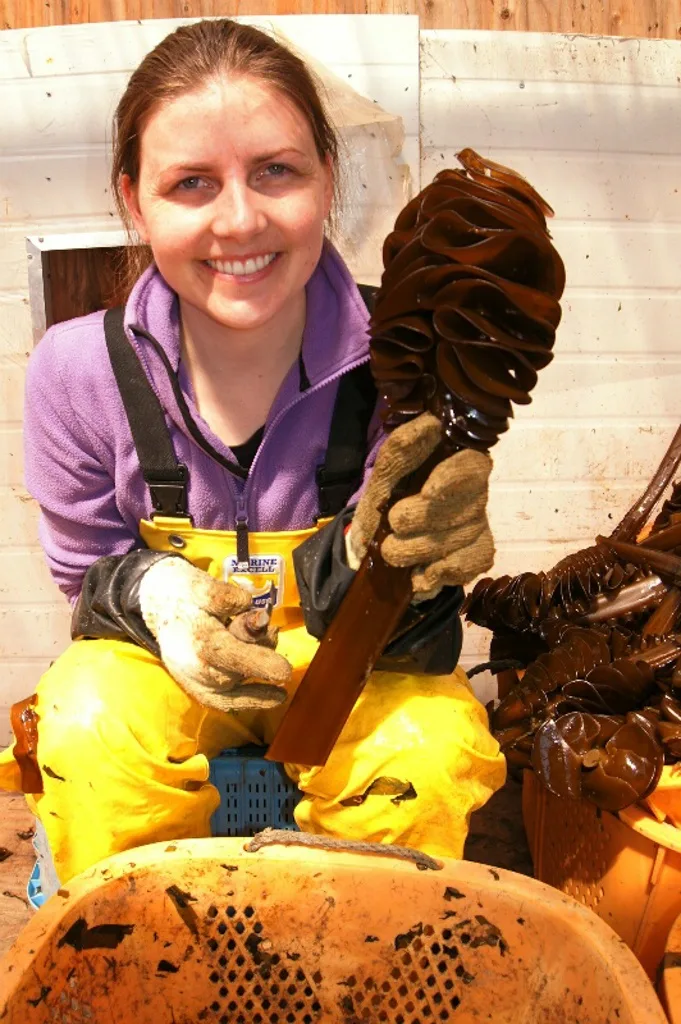
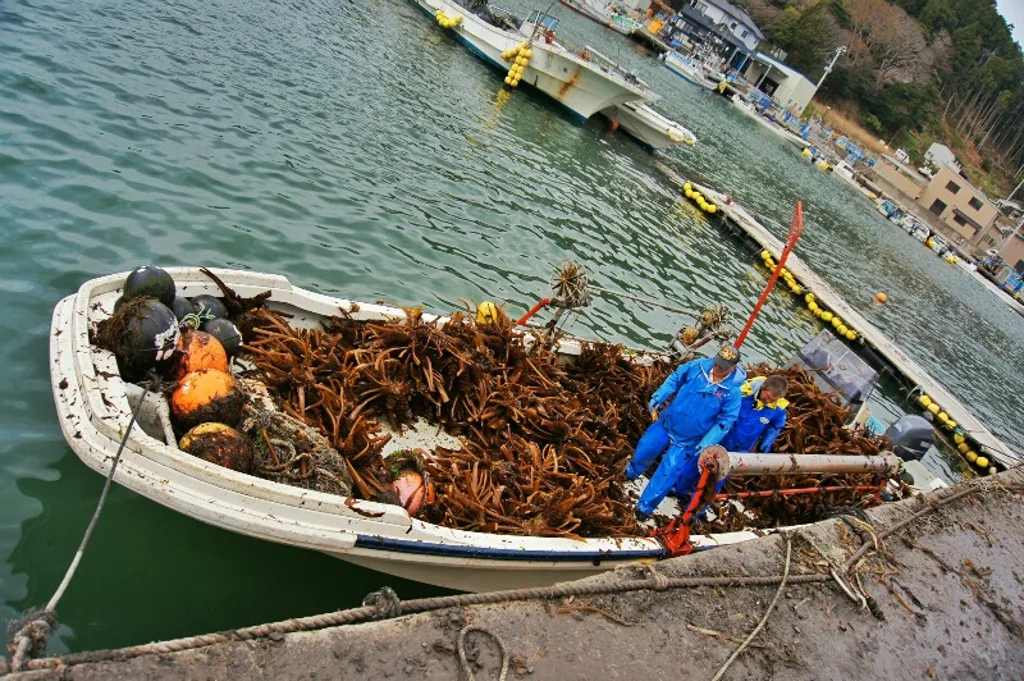
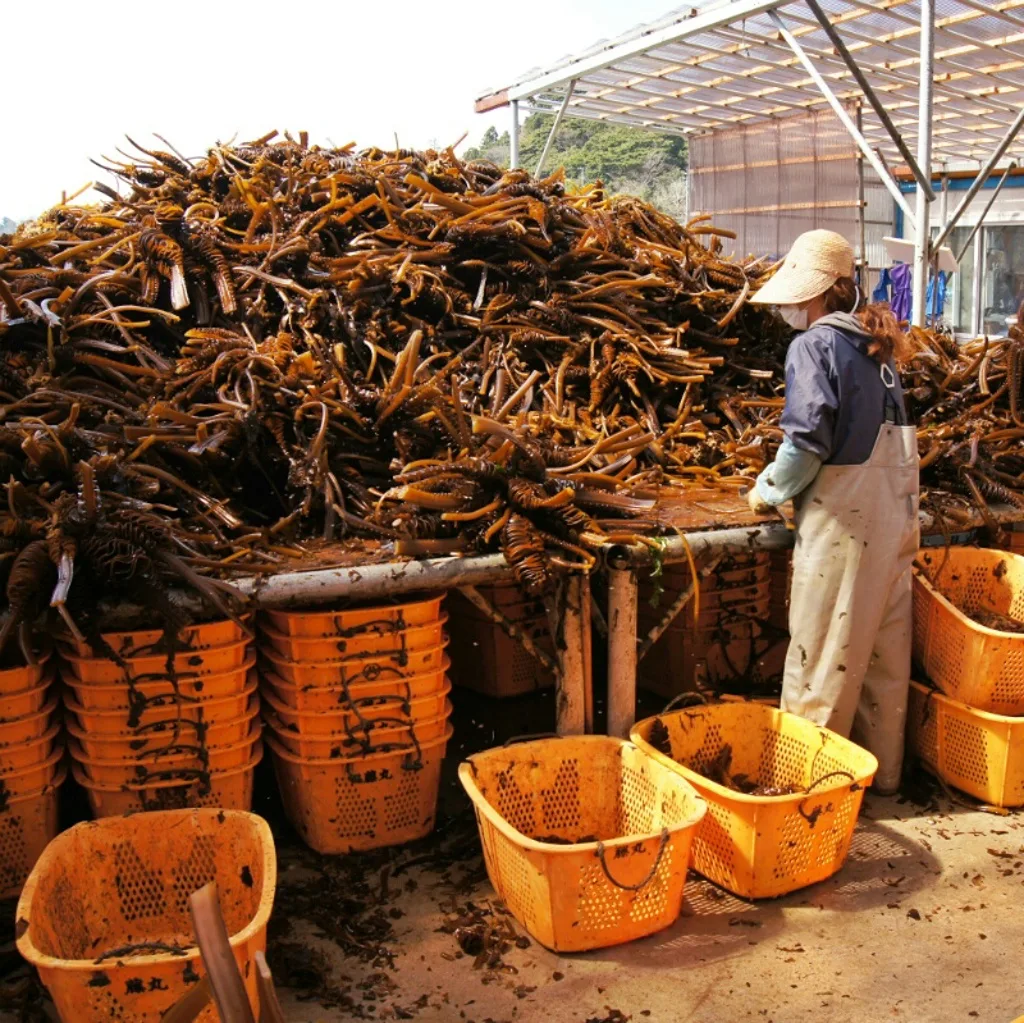
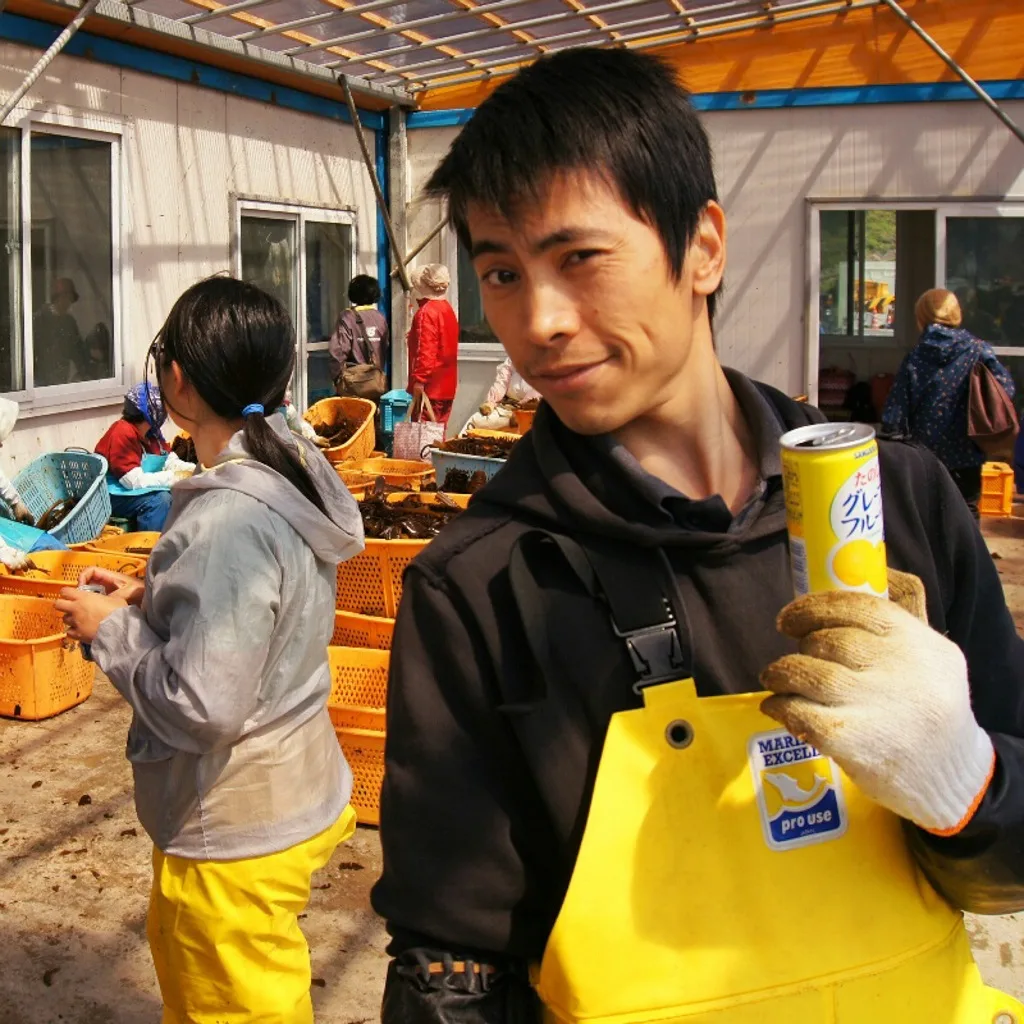
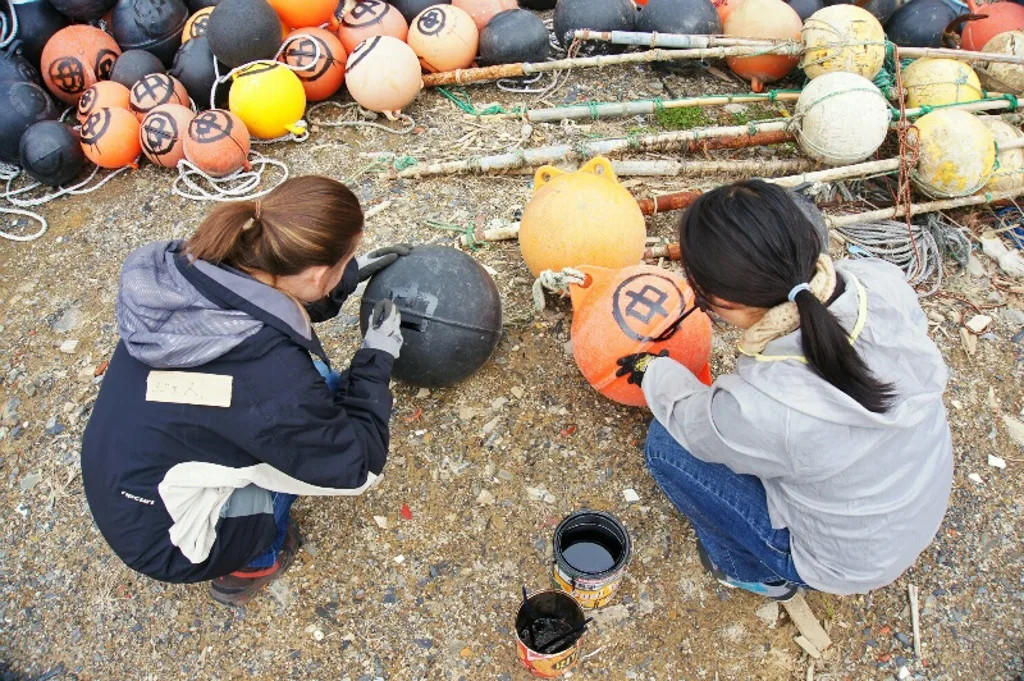
Cory Nakashima
Saturday 5th of April 2014
Great post Jessica. I had the privilege to work alongside the fishermen at Funakoshi helping with the Ogatsu stones when the ladies project was still ongoing in April of 2012. INJM is doing awesome things in Ishinomaki and keep spreading the word using social media. I was planning a trip back to Japan at the end of April and was wondering if you had the address for the fishing village where Nakasato-san is. I think its probably best I go on my own this time and not bother Jamie guys. Thank you for all that you have done and will continue to do in the coming years.
Britt Skrabanek
Thursday 20th of March 2014
Growing up in Southern California meant a similar mixture of complacency and fear for all of us kids. I probably would have been more casual about them if one really bad quake hadn't occurred back when I was in kindergarten. I just looked it up and it was a 6.0, but it was very close so we got the full experience. It was terrifying, early in the morning just after we had gotten to school. Our parents even had to come pick us up when it was safe. Earthquakes are definitely one of those things I do not miss about Cali.
For the people of Japan, I was really upset when 3/11 happened. I could only imagine how traumatic it was. It is so awesome of you guys to continue spreading the word. Too often a disaster happens, takes center stage briefly, then is swiftly closed behind the heavy curtain.
Jessica Korteman
Tuesday 25th of March 2014
That must have been terrifying, Britt. A 6.0 is certainly no joke. Because of disasters resulting from very high magnitude earthquakes over recent years, there is a tendency for many to assume that such magnitudes aren't serious. But feeling a six close to the epicenter, as you know, is nothing short of alarming. Not to mention potentially devastating in places where the infrastructure is not designed to cope.
Hopefully we can all work together on disaster awareness, preparedness and response, and ensuring that communities affected are not just a fleeting concern while they are considered news-worthy.
Heather
Thursday 13th of March 2014
Such a beautiful post, Jessica! I remember that day vividly as my sister-in-law was living in Tokyo at the time. Since the international news coverage was so sensational, we monitored the US State Department website to see what warnings they issued. As soon as they evacuated the US Embassy in Tokyo because of fears over Fukushima, we told her to get out. She flew back to the States for about five days, but felt so guilty for abandoning her Japanese friends that she went back. It's tough to know what's the right thing to do in circumstances like that. Kuddos to you and Hai for all you did to help rebuild that community!
Jessica Korteman
Wednesday 19th of March 2014
Thank you so much for taking the time to read and comment, Heather. That time after the earthquake and tsunami was filled with so much anxiety. Fukushima compounded an already heartbreaking situation and the fact that it's a threat that cannot be seen and the effects (if we were in danger) not evident immediately, made the decision all the more difficult. You second guessed yourself a million times no matter what you did. Neither staying nor going felt "right" - there were downsides to both.
And, as you mentioned, there was the battle of the sensationalism of the international media and the unnerving calmness of local outlets. There was no knowing who or what to believe. Everyone just had to make those calls for themselves and hope it was the right one.
The Fukushima issue remains a real threat to people and communities. Let's hope that we can protect as many people as possible from its repercussions and that the right moves are made from here.
Joella J (J in Beijing)
Wednesday 12th of March 2014
Wonderful and heartfelt, Jessica. Thank you for sharing this. I was in London at the time, but I'll never forget turning on the news and seeing all the horrifying images from that day. I love your thoughts on mateship and helping others. The fisherman's words to you about not having forgotten, were heartbreaking. I hope those that survived continue to be able to rebuild their lives and communities and we will not forget them.
Jessica Korteman
Wednesday 19th of March 2014
Thank you for reading and your beautiful comment, Joella. Each year that passes makes it harder and harder to keep people "interested" in Tohoku. I really hope that by sharing and talking about it, we can remind the world that disaster recovery is not something that can be achieved in a few short years. Thanks for being a mate.
Xavi Escuder
Wednesday 12th of March 2014
If there is something true about Japan is that It is has something special, magical. Although 10 years on from the disaster, It can't just disappear. Today, I found this pictures ( http://t.co/MQ2pmUjbi6), and of course, there is still a lot of work to do.
Jessica Korteman
Tuesday 18th of March 2014
Thank you very much for your comment and sharing those pictures, Xavi. Japan certainly is a very special place and despite three years having passed already, as you said, there is still much to be done. Let's hope we can keep Tohoku in people's minds by continuing to share about the ongoing situation there.
Adam @ Round the World we go
Thursday 13th of March 2014
Those photos speak a thousand words. A really lovely post Jessica. Such great efforts too, it's really inspirational seeing what you have done to help!